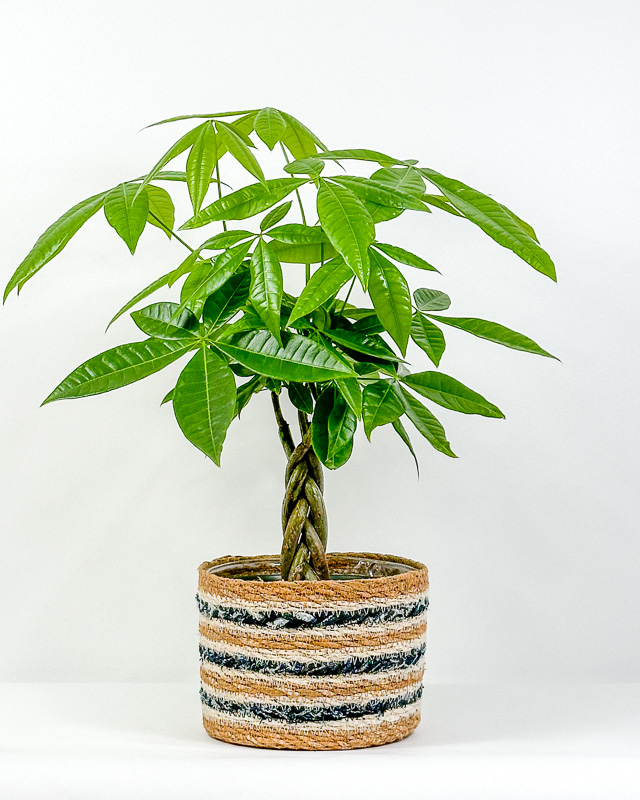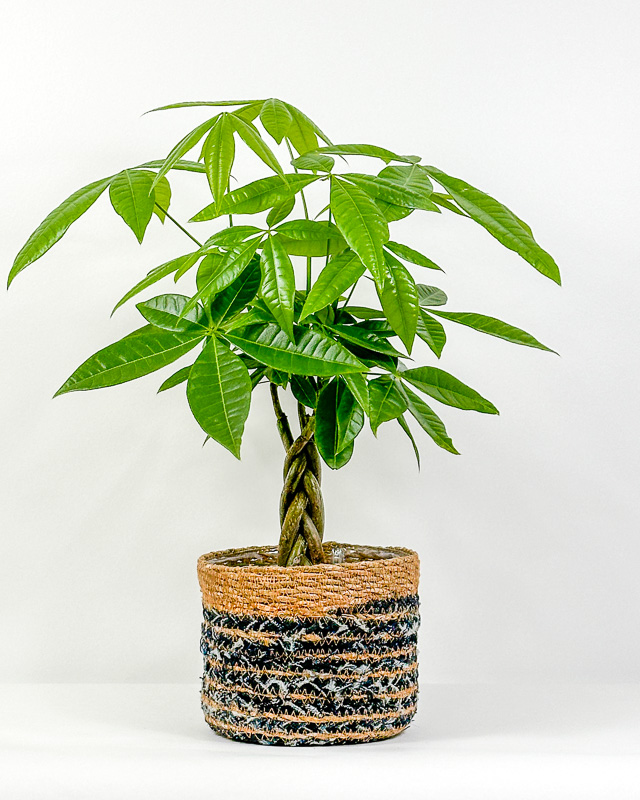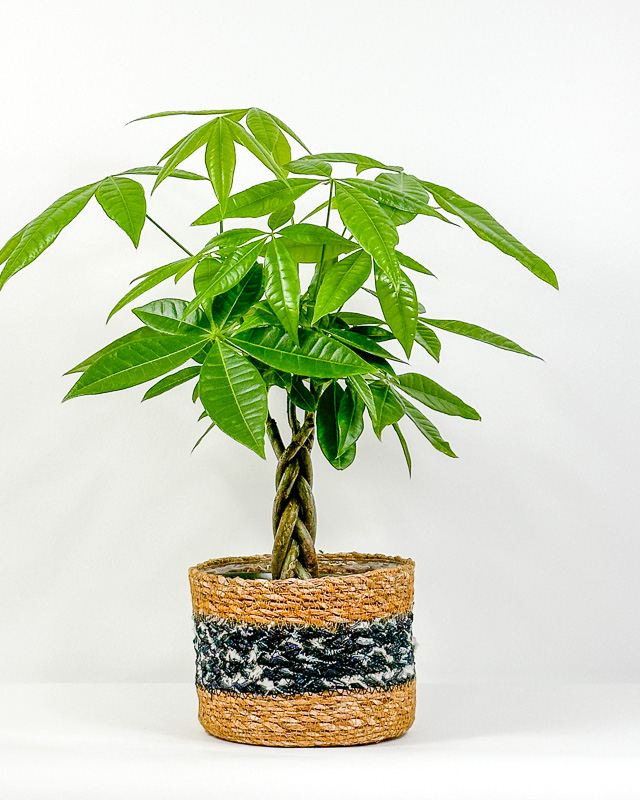Pachira aquatica
The Pachira Tree, also known as Malabar chestnut or Money Tree, is a popular ornamental plant native to the wetlands of Central and South America, including regions of Mexico, Brazil, and Guyana. Despite its name, the Pachira is not a true species of tree but rather a tropical wetland plant that can grow up to 60 feet tall in its natural habitat. In cultivation, it is often grown as a small indoor tree or bonsai, prized for its unique appearance and cultural significance.
Appearance
The Pachira is characterized by its thick trunk and glossy, palmate leaves. The trunk, which can be trained into various shapes, is often braided to represent the symbolic fusion of luck, prosperity, and good fortune. Its leaves are compound, consisting of five to seven leaflets arranged in a radial pattern, with each leaflet having a smooth, leathery texture and a deep green color. In favorable conditions, the Money Tree may produce clusters of white, star-shaped flowers followed by small, edible nuts resembling chestnuts.
Care
Light
The Pachira Tree thrives in bright, indirect light but can tolerate some shade. Avoid placing it in direct sunlight, as this can scorch its leaves.
Watering
Water the Money Tree when the top inch of soil feels dry, ensuring thorough saturation but allowing excess water to drain away. Avoid overwatering, as this can lead to root rot.
Soil
Use a well-draining, nutrient-rich potting mix with good aeration to promote healthy root growth. A mix of peat moss, perlite, and compost is ideal for Pachira Money Trees.
Fertilizing
Feed the Money Tree with a balanced liquid fertilizer every 4-6 weeks during the growing season (spring and summer). Reduce feeding in fall and winter when growth slows down.
Pruning and Maintenance
Trim any dead or yellowing leaves and prune the plant as needed to maintain its shape and size. Repot the Money Tree every 2-3 years to refresh the soil and provide ample space for root growth.




